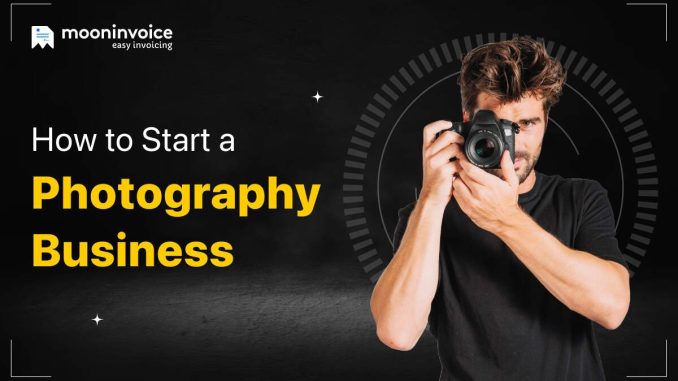
Photographers see the world differently. They train their eyes to notice nuance, frame moments with intention, and capture emotion in ways that words often fail to express. While their craft may seem far removed from the world of business, the mindset and discipline of photography offer valuable lessons for entrepreneurs and leaders alike. In fact, many of the qualities that make a great photographer—attention to detail, patience, empathy, and storytelling—are the same ones that help build resilient, emotionally intelligent businesses.
One of the most striking things about photographers is their ability to find beauty in the ordinary. They don’t wait for perfect conditions or dramatic scenes. Instead, they learn to work with what’s in front of them, adjusting their lens, lighting, and perspective to reveal something meaningful. Businesses can benefit from this approach by learning to see potential in everyday interactions. Whether it’s a customer complaint, a routine meeting, or a quiet moment of reflection, there’s often more value than meets the eye. The key is to slow down and look closer.
Photographers are masters of framing. They understand that how you present something is just as important as what you’re presenting. In business, framing influences perception. The way you position your brand, communicate your message, or structure your offerings can dramatically affect how people respond. A well-framed story evokes emotion, builds trust, and invites engagement. It’s not about manipulation—it’s about clarity and intention. When businesses learn to frame their value in a way that resonates, they become more memorable and compelling.
Light is another central element in photography, and it’s a powerful metaphor for business. Photographers chase light, shape it, and use it to reveal truth. In business, light can represent transparency, authenticity, and insight. Companies that operate in the light—sharing their values, admitting mistakes, and communicating openly—tend to build stronger relationships. Light also symbolizes vision. Just as photographers anticipate how light will change a scene, leaders must anticipate how trends, behaviors, and needs will evolve. That foresight is what keeps businesses relevant.
Timing is everything in photography. Capturing the decisive moment requires patience, awareness, and instinct. In business, timing can make or break a strategy. Launching too early or too late, responding too quickly or too slowly—these decisions have real consequences. Photographers learn to wait for the right moment, but they also prepare for it. They study their environment, understand their tools, and stay ready. Businesses can adopt this mindset by balancing preparation with agility, knowing when to act and when to hold back.
Empathy is a quiet but powerful force in photography. To capture someone’s essence, a photographer must connect with them, understand their mood, and make them feel comfortable. This emotional intelligence translates directly to business. Companies that prioritize empathy—toward customers, employees, and partners—create environments where people feel seen and valued. Empathy leads to better products, more thoughtful service, and deeper loyalty. It’s not just a soft skill; it’s a strategic advantage.
Photographers also understand the importance of editing. Not every shot makes the final cut, and that’s okay. Editing is about refinement, not perfection. It’s about choosing what to highlight and what to let go. In business, this translates to focus. Not every idea, product, or initiative deserves equal attention. Leaders must learn to curate their efforts, prioritize what matters, and eliminate distractions. Editing isn’t about doing less—it’s about doing what’s most impactful.
Storytelling is at the heart of photography. A single image can convey a narrative, evoke emotion, and spark imagination. Businesses, too, must learn to tell stories—not just about what they do, but why they do it. Stories humanize brands, create emotional connections, and differentiate offerings. They help people understand your journey, your values, and your impact. When a business tells a compelling story, it invites others to be part of it.
Photographers often work in unpredictable conditions. Weather changes, subjects move, and light fades. They learn to adapt, improvise, and stay calm under pressure. This resilience is essential in business. Markets shift, competitors emerge, and plans unravel. The ability to stay grounded, adjust your approach, and keep creating is what separates thriving businesses from struggling ones. Flexibility isn’t a compromise—it’s a strength.
Collaboration is another lesson from photography. While some photographers work solo, many rely on teams—stylists, assistants, editors, and clients. They understand that great work often comes from shared vision and mutual respect. In business, collaboration fuels innovation. Diverse perspectives lead to better solutions, and strong relationships lead to smoother execution. Building a culture of collaboration means valuing input, encouraging dialogue, and celebrating collective wins.
Photographers also know the value of perspective. Changing your angle can transform a scene. What looks mundane from one viewpoint can become extraordinary from another. In business, perspective is crucial. Leaders must be willing to challenge assumptions, explore alternatives, and see through the eyes of others. Whether it’s a customer’s experience, an employee’s challenge, or a market trend, shifting perspective can unlock new opportunities.
Finally, photographers are driven by curiosity. They explore, experiment, and seek out stories waiting to be told. That curiosity keeps their work fresh and their passion alive. Businesses that cultivate curiosity—asking questions, testing ideas, and embracing learning—stay dynamic and innovative. Curiosity isn’t just about discovery; it’s about growth. It’s what keeps a business evolving, adapting, and thriving in a changing world.
When businesses adopt the mindset of photographers, they become more intentional, empathetic, and creative. They learn to see with clarity, act with purpose, and connect with emotion. Photography isn’t just an art—it’s a way of thinking. And in a business landscape that demands both strategy and soul, that way of thinking can make all the difference.